About Sharqia
The Eastern Province (Arabic: ??????? ??????? al-Mintaqah ash-Sharq?yah), also known as the Eastern Region, is the easternmost of the 13 provinces of Saudi Arabia. It is the largest province by area and the third most populous after the Riyadh Province and the Mecca Province. In 2017, the population was 4,900,325.[1] Of these, 3,140,362 were Saudi citizens and 1,759,963 were foreign nationals[2] The province accounts for 15.05% of the entire population of Saudi Arabia[1] and is named for its geographical location relative to the rest of the kingdom.
More than a third of the population is concentrated in the Dammam metropolitan area. With an estimated population of 1.25 million as of 2019,[3] Dammam, the capital of the province, is the sixth most populous city in the kingdom. The incumbent governor of the province is Prince Saud bin Nayef Al Saud. Other populous cities in the province include Hofuf, Mubarraz, Hafr al-Batin, Jubail and Khobar.[4] The region is extremely popular among tourists for its beaches on the Persian Gulf and proximity to the other countries of the eastern Arab world, such as the United Arab Emirates, Qatar and Bahrain, with the latter being linked to the province via the 25 km (15 mi) long King Fahd Causeway. The region also shares a border with Oman. The province is bordered to the west, from north to south, by the provinces of the Northern Borders, Ha'il, Qassim, Riyadh and Najran.
The Eastern Province encompasses the entire east coast of Saudi Arabia and acts as a major platform for most of the kingdom's oil production and exports. Oil was first found in the country in the Eastern Province, at the Prosperity Well site (formerly known as Dammam No.7). The Ghawar oil field, located in the Ahsa Governorate, measuring 8,400 sq.km. (3,240 sq.mi.) is the largest oil field in the world,[5] and accounts for roughly a third of the kingdom's oil production. The Safaniya oil field, located off the coast of the province, is the largest offshore oil field in the world. The Jubail Industrial City, part of the city of Jubail, the fifth most populous in the province, is the largest industrial city in the world.
The region was home to the Dilmun civilization which was an ancient Semitic-speaking polity in Eastern Arabia. Founded in the late 4th millennium BC and lasting until approximately 538 BC it is regarded as one of the oldest civilizations in the world.[7][8] Dilmun was an important and prosperous trading centre for millennia with well-developed and long-standing trading, commercial and cultural ties with nearby Mesopotamia in particular and the Indus Valley civilisation. A number of scholars have suggested that Dilmun originally designated the eastern province of Saudi Arabia, notably linked with the major Dilmunite settlements of Umm an-Nussi and Umm ar-Ramadh in the interior and Tarout Island on the coast.
Geography
Approximately two-thirds of the province is desert, comprising, from south to north, the Rub' al Khali, Dahna and Nafud deserts, with the Rub' al-Khali alone making up more than half of the area of the province. Areas such as Hafr al-Batin and the Ahsa Oasis have become important sites for desert farming due to the advancements made during the Green Revolution in farming and irrigation techniques.
The entire eastern coast of the kingdom lies in the Eastern Province. The region borders, from north to south, the countries of Iraq, Kuwait, Bahrain, Qatar, United Arab Emirates and Oman.
History
The Eastern Province was home to the Dilmun civilization for several millennia which was an important trading center from the late fourth millennium BC to 800 BC.[citation needed] At the height of its power, Dilmun controlled the Persian Gulf trading routes.[citation needed] Dilmun was very prosperous during the first 300 years of the second millennium.[10]
The Dilmun civilization was the centre of commercial activities linking traditional agriculture of the land—then utterly fertile due to artesian wells that have dried since, and due to a much wetter climate—with maritime trade between diverse regions such as the Meluhha (suspected to be Indus Valley Civilisation), Magan (Oman), and Mesopotamia.[8] The Dilmun civilization is mentioned first in Sumerian cuneiform clay tablets dated to the late third millennium BC, found in the temple of goddess Inanna, in the city of Uruk. One of the earliest inscriptions mentioning Dilmun is that of king Ur-Nanshe of Lagash (c. 2300 BC) found in a door-socket: "The ships of Dilmun brought him wood as tribute from foreign lands."[11]
The great commercial and trading connections between Mesopotamia and Dilmun were strong and profound to the point where Dilmun was a central figure to the Sumerian creation myth.[12] Dilmun was described in the saga of Enki and Ninhursag as pre-existing in paradisiacal state, where predators don't kill, pain and diseases are absent, and people do not get old.[12] Likewise the Sumerian tale of the garden paradise of Dilmun may have been an inspiration for the Garden of Eden story.[13][14][15]
Dilmun's commercial power began to decline between 1000 BC and 800 BC because piracy flourished in the Persian Gulf. The most recent reference to Dilmun came during the Neo-Babylonian Empire. Neo-Babylonian administrative records, dated 567 BC, stated that Dilmun was controlled by the king of Babylon. The name of Dilmun fell from use after the collapse of Babylon in 538 BC.[citation needed]
The northern part of the Eastern Province later became inhabited by the Arab Lakhmids around 300 AD, with the coastal regions claimed by the Sasanians but governed by the Lakhmids. The entire Arabian Peninsula fell into Muslim hands during the Rashidun Caliphate and the Muslim conquest of Persia, after Muhammad's death.[16] The region stayed stable during the first three Islamic caliphates.





